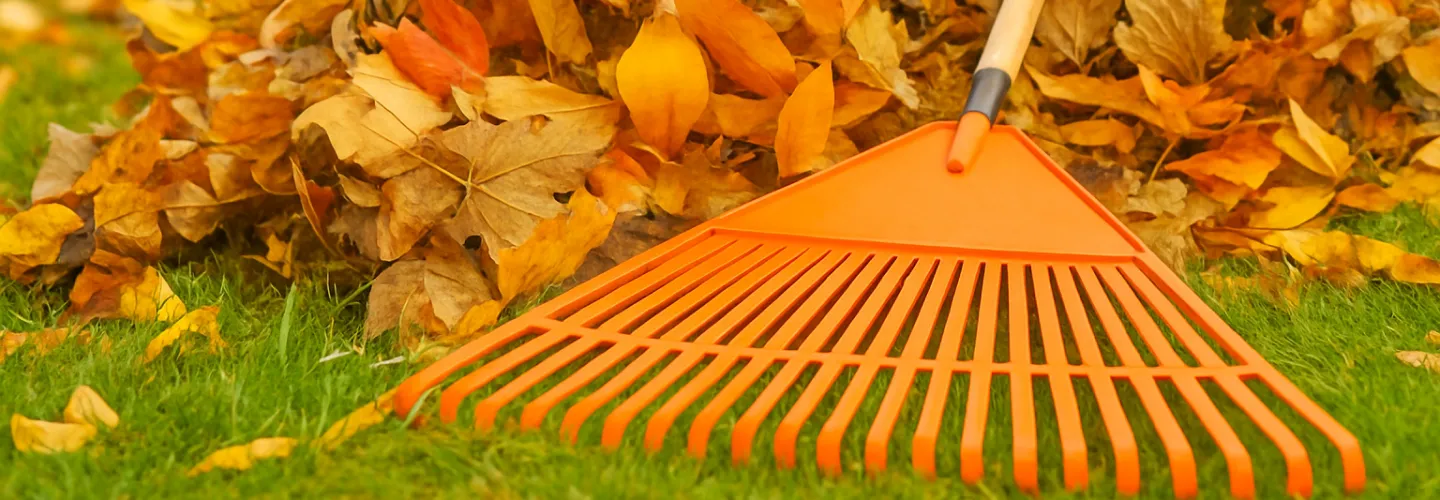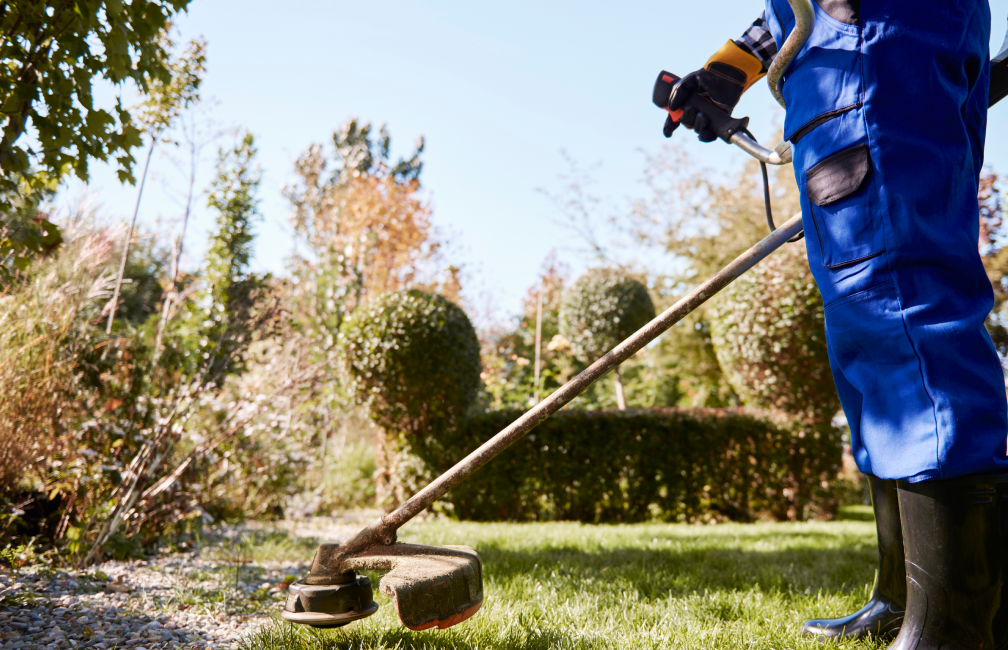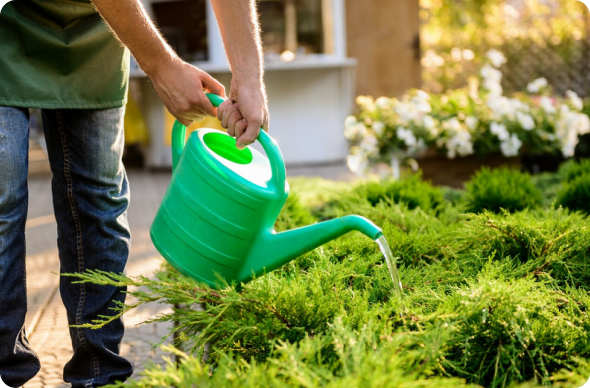
Acton Leaf Removal Services
Choose our professional leaf removal for a hassle-free, thorough cleanup that keeps your yard healthy, safe, and looking its best all season long.
Get a Free QuoteWhen to Schedule Leaf Removal in Acton, MA – Seasonal Guide
In Acton, MA, the best time to schedule leaf removal is typically from late October through early December, when the majority of deciduous trees—such as those lining Main Street and the neighborhoods near Nara Park—have shed their leaves. Acton's climate features cool autumns with the first frost often arriving in late October, signaling the start of peak leaf drop. Scheduling removal after the majority of leaves have fallen, but before heavy snowfall, helps protect your lawn from mold and compaction caused by wet, decomposing leaves.
Local environmental factors play a significant role in determining the optimal timing for leaf removal. For example, areas with dense shade, like those near the Acton Arboretum, may experience slower leaf decomposition due to higher humidity and less sunlight. Soil type also matters—properties with clay-heavy soils common in West Acton can retain moisture, increasing the risk of turf damage if leaves are left too long. Additionally, municipal guidelines and updates, available on the Town of Acton website, may influence when and how leaf removal should be performed.
Local Factors to Consider for Leaf Removal in Acton
- Tree density and species variety (oaks and maples drop leaves at different times)
- Proximity to wetlands or shaded areas (affects moisture retention)
- Typical precipitation patterns in late fall
- Terrain and slope, especially in hilly neighborhoods
- Local municipal restrictions or collection schedules
- Soil type (clay vs. sandy soils)
- Risk of early frost or snow accumulation
Benefits of Leaf Removal in Acton

Enhanced Curb Appeal
Healthier Lawns
Prevents Pest Infestations
Reduces Lawn Disease
Saves Time and Effort
Professional and Reliable Service

Acton Leaf Removal Types
Curbside Leaf Pickup
Full-Service Leaf Removal
Leaf Mulching
Bagged Leaf Collection
Vacuum Leaf Removal
Seasonal Leaf Cleanup
Our Leaf Removal Process
Site Evaluation
Leaf Collection
Debris Removal
Final Inspection
Why Choose Acton Landscape Services

Acton Homeowners Trust Us
Comprehensive Lawn Maintenance
Competitive Pricing
Professional Team
Satisfaction Guarantee
Personalized Service
Reliable Scheduling
Contact Acton's Department of Public Works for Seasonal Leaf Collection & Curbside Pickup Schedules
Acton's comprehensive municipal leaf collection program operates from mid-October through early December, providing residents with convenient disposal options for the substantial volume of organic debris generated by the town's mature tree canopy. The Town of Acton Department of Public Works coordinates neighborhood-specific collection schedules based on leaf drop patterns, with West Acton and Central Acton areas typically receiving priority due to higher concentrations of large deciduous trees.
Residents must place leaves in biodegradable paper bags according to published schedules, with collection occurring once weekly during peak season. The Acton Transfer Station provides additional disposal options for residents with excessive leaf volumes, operating extended hours during fall peak periods with valid transfer station permits.
Town of Acton Department of Public Works
472 Main Street, Acton, MA 01720
Phone: (978) 929-6611
Official Website: Department of Public Works
Essential guidelines for Acton's municipal leaf collection include:
- Use only biodegradable paper bags—plastic bags prohibited in yard waste collection
- Place materials at curbside by 7:00 AM on designated collection days
- Keep leaf piles away from storm drains, fire hydrants, and parked vehicles
- Consider mulch-mowing leaves into fine pieces when coverage is light to moderate
Understanding Leaf Accumulation Impact on Acton's Dense Clay Soils & Lawn Health
Acton's challenging soil conditions create unique problems when thick leaf layers accumulate on residential lawns during fall months. The town's predominant Paxton and Montauk series soils, featuring dense clay subsoils and poor drainage characteristics, become anaerobic when covered by heavy leaf deposits that prevent oxygen exchange and create conditions harmful to grass root systems.
Unlike sandy soils that allow better air and water movement, Acton's glacial till deposits retain moisture and create environments where decomposing leaves can suffocate turf within 2-3 weeks of accumulation. This makes timely leaf removal particularly critical for maintaining healthy lawns through winter dormancy and ensuring vigorous spring recovery.
University of Massachusetts Extension Center for Agriculture, Food and the Environment
101 University Drive, Amherst, MA 01002
Phone: (413) 545-0648
Official Website: University of Massachusetts Extension
Critical factors affecting leaf management in Acton's soil conditions:
- Dense clay subsoils prevent natural leaf decomposition and create anaerobic conditions
- Poor drainage characteristics cause leaf layers to mat down and block sunlight
- Seasonal freeze-thaw cycles compact wet leaves against grass surfaces
- Mulch-mowing works effectively only with light leaf coverage on well-draining areas
Acton Conservation Commission Guidelines for Leaf Disposal Near Wetlands & Protected Areas
Acton's extensive network of conservation lands and protected natural areas requires careful consideration when managing leaf removal operations near sensitive environmental zones. The Acton Conservation Commission, operating under the Massachusetts Wetlands Protection Act, maintains specific guidelines for organic matter management within buffer zones surrounding wetlands, streams, and conservation areas.
Properties adjacent to areas such as the Great Road Agricultural Preserve, Acton Arboretum, and numerous vernal pool habitats must implement leaf management practices that protect water quality while supporting natural ecosystem functions. Natural leaf accumulation in forest edges and conservation buffer zones should generally remain undisturbed to support wildlife habitat and natural nutrient cycling.
Acton Conservation Commission
472 Main Street, Acton, MA 01720
Phone: (978) 929-6640
Official Website: Conservation Commission
Environmental requirements for leaf management near protected areas include:
- Never dispose of leaves directly into wetlands, streams, or stormwater drainage systems
- Maintain natural leaf litter in conservation buffer zones to support wildlife habitat
- Avoid mechanical equipment operation within 25 feet of sensitive environmental areas
- Use hand removal methods near vernal pools during amphibian breeding seasons
Keep Leaves Out of Streets & Storm Drains: Acton's MS4 Stormwater Compliance Requirements
Acton's Municipal Separate Storm Sewer System (MS4) permit, administered under federal Clean Water Act requirements, specifically prohibits leaf debris from entering storm water systems that discharge to the Assabet River watershed and local water bodies. Residents face potential enforcement action for sweeping or blowing leaves into streets, gutters, or storm drains, as organic matter creates water quality problems and violates municipal discharge permits.
When leaves enter storm drains, they decompose and deplete oxygen levels in receiving waters while contributing nutrients that promote algae growth and degrade aquatic habitat. Property owners must manage leaves on their property and ensure debris does not migrate to municipal storm water infrastructure.
U.S. Environmental Protection Agency, Region 1
5 Post Office Square, Suite 100, Boston, MA 02109
Phone: (617) 918-1111
Official Website: U.S. Environmental Protection Agency
Acton's Implementation of Massachusetts Organic Waste Diversion Requirements for Fall Leaves
The Commonwealth of Massachusetts prohibits disposal of leaves and yard waste in household trash under state organic waste diversion mandates administered by the Massachusetts Department of Environmental Protection. Acton implements these requirements through comprehensive municipal collection programs, composting initiatives, and resident education that supports statewide goals for sustainable waste management.
Massachusetts Department of Environmental Protection
One Winter Street, Boston, MA 02108
Phone: (617) 292-5500
Official Website: Massachusetts Department of Environmental Protection
Optimal Leaf Removal Timing for Acton's Tree Species & New England Fall Weather Patterns
Successful leaf management in Acton requires understanding the sequential drop patterns of the town's diverse tree canopy and coordinating removal activities with seasonal weather conditions. Acton's mature landscape includes significant populations of sugar maples that typically drop leaves in early October, red oaks that retain foliage through November, and American beeches that may hold leaves into December.
According to National Weather Service Boston climate data, optimal removal timing occurs after major drop events but before heavy rainfall that can mat leaves against turf surfaces.
National Weather Service Boston
25 Vandenberg Avenue, Norwood, MA 02062
Phone: (508) 622-3250
Official Website: National Weather Service Boston
Strategic timing considerations include:
- Early pass: Late October after first peak drop
- Second pass: Mid-November as oak and birch finish
- Final cleanup: Late November into early December before snow cover
What Neighborhoods Do We Serve Throughout Acton, MA?
Our comprehensive understanding extends throughout Acton's diverse neighborhoods, each presenting unique leaf management challenges based on tree species composition, soil conditions, and environmental considerations.
West Acton Village & Assabet River Corridor: Features some of Acton's heaviest leaf accumulation due to mature riverside trees including silver maples and willows. Properties near the Assabet River Rail Trail face additional challenges from wind-blown leaves and seasonal flooding.
Central Acton Historic Core: Features mature street trees including Norway maples that create concentrated leaf drop in urban areas. Properties near the Acton Memorial Library and Town Common experience high foot traffic that can compact wet leaves.
South Acton & Nagog Hill Historic District: Features extensive oak populations that retain leaves longer, requiring extended collection periods through November. Steep slopes face erosion challenges during leaf removal operations.
North Acton & Bruce Freeman Rail Trail: Encompasses newer developments with diverse tree populations. Properties near the rail trail benefit from natural wind patterns but face seasonal flooding challenges.
East Acton & Carlisle Border: Features mixed forest conditions requiring selective removal to maintain lawn health while supporting ecosystem functions.
Acton Municipal Bylaws for Leaf Blowing Equipment Operation & Noise Control
The Town of Acton maintains specific municipal bylaws governing mechanical equipment operation from 7:00 AM to 6:00 PM weekdays, 8:00 AM to 6:00 PM Saturdays, with Sunday and holiday operations restricted to emergency situations.
Acton Board of Health
472 Main Street, Acton, MA 01720
Phone: (978) 929-6620
Official Website: Acton Board of Health
Acton Building Department
472 Main Street, Acton, MA 01720
Phone: (978) 929-6650
Official Website: Building Department
The Board of Health regulations provide guidance on dust control measures during dry leaf removal operations and organic matter management. Commercial services must comply with licensing requirements and equipment operation standards that balance efficiency with community quality of life considerations.